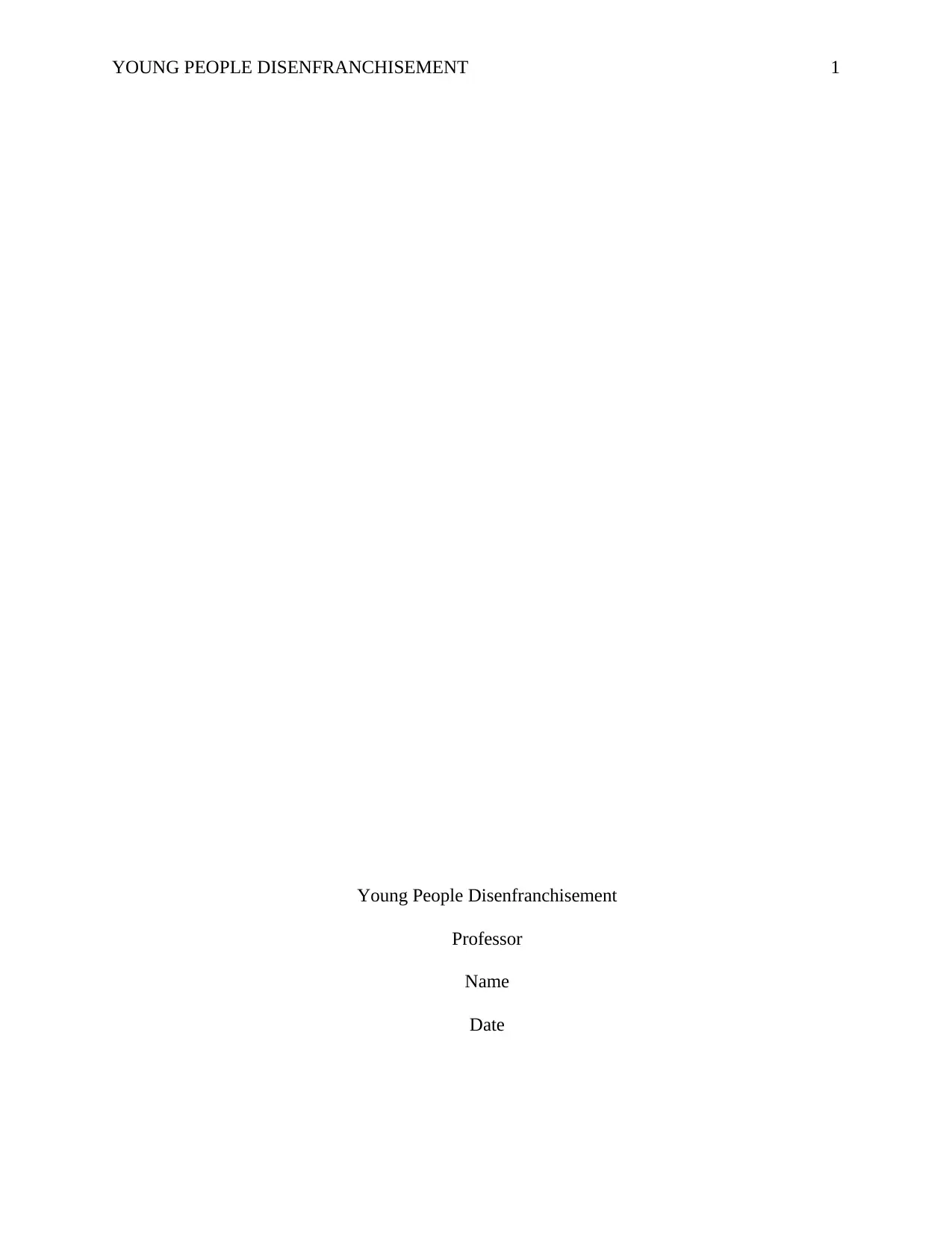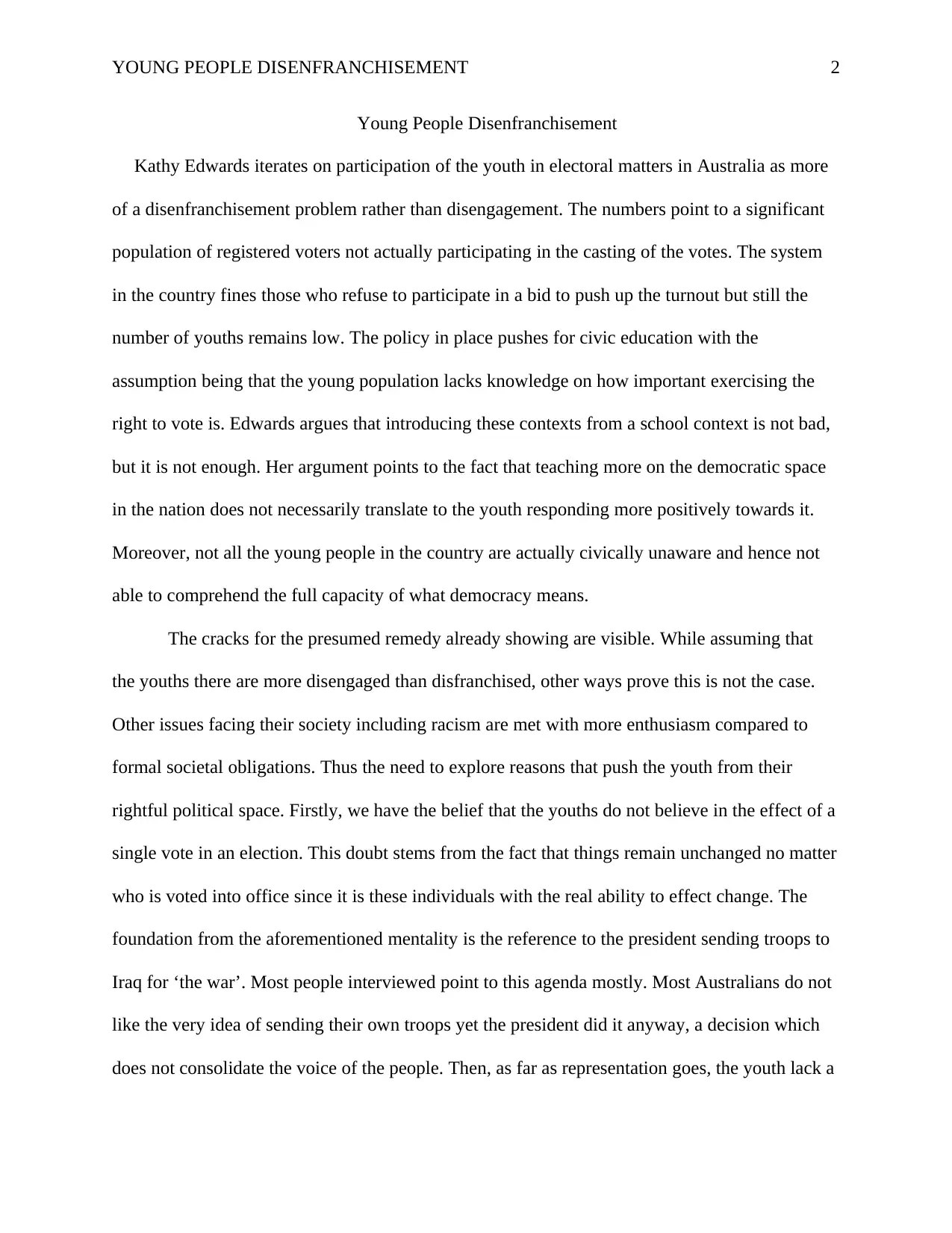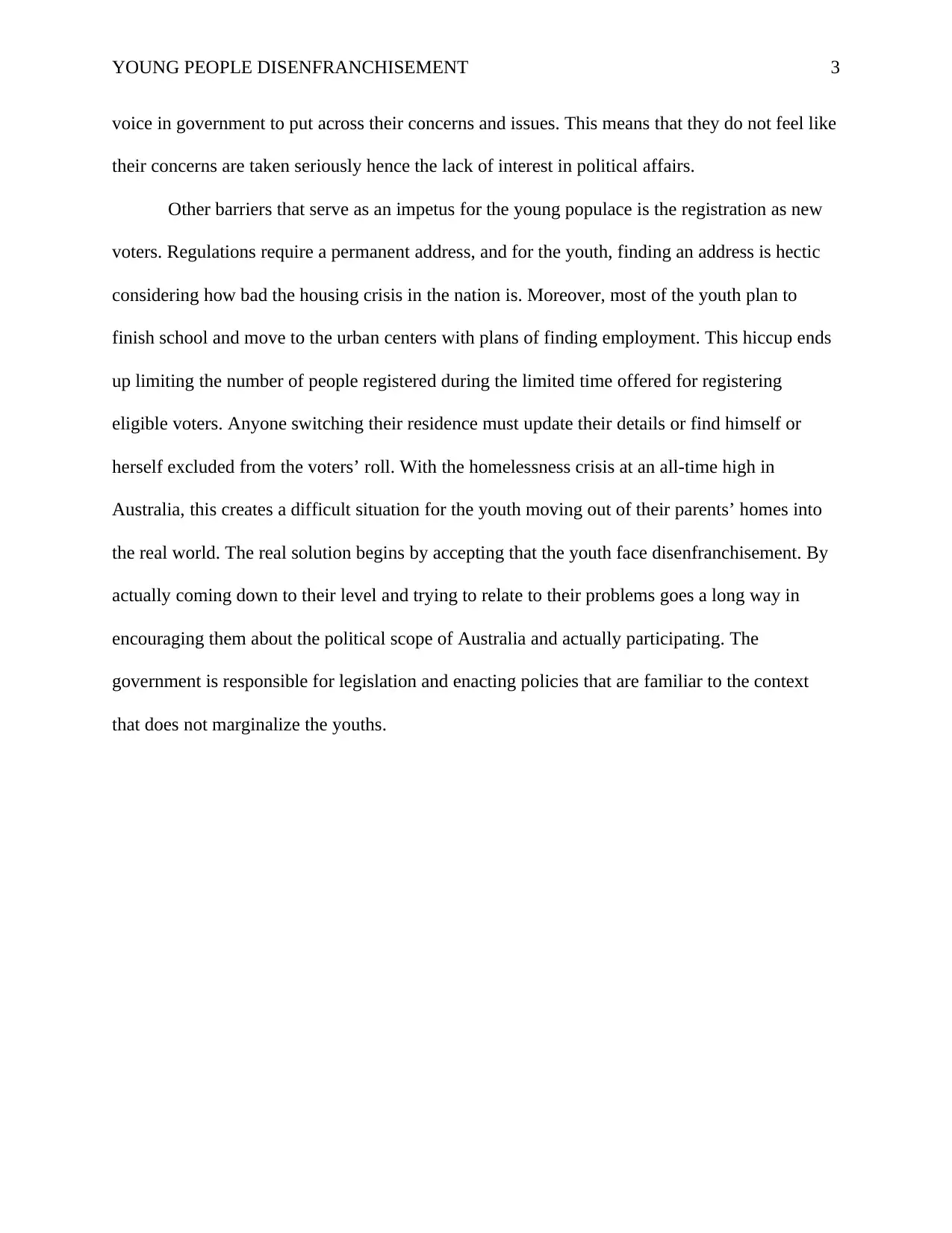From Deficit to Disenfranchisement: Youth Electoral Participation
VerifiedAdded on 2022/11/13
|3
|619
|120
Essay
AI Summary
This essay examines youth disenfranchisement in Australia, arguing that low youth electoral participation is more a problem of disenfranchisement than disengagement. It analyzes factors such as the belief that a single vote doesn't matter, lack of youth representation, and difficulties with voter registration due to housing crises and mobility. The essay critiques the current approach of civic education, suggesting it's insufficient, and emphasizes the need to understand and address the specific challenges faced by young people. It advocates for government policies that are relevant to the youth context and promote their engagement in the political sphere. The essay highlights the need to acknowledge and address the disenfranchisement to encourage greater participation.
1 out of 3




![[object Object]](/_next/static/media/star-bottom.7253800d.svg)